- Eruptions: Where It's Always Volcano Day
- Posts
- Eruptions Newsletter #16 for July 25, 2025
Eruptions Newsletter #16 for July 25, 2025
New eruptions in Iceland, phreatic explosions in El Salvador and they found the Dante's Peak Suburban!
As I settled into the routine of newsletter and podcast, the schedule is going to shift once again. Until September, I will be alternating newsletter and podcast each week. So, this week is a newsletter week, next week will be a new episode of the podcast (by the way, be sure to check out this week’s 5 Minute Volcano on Llullaillaco in the Andes of Chile/Argentina).
Once the new academic year hits, we’ll see how this schedule might change. All this being said, if something dramatic happens, look for “extra” newsletter posts to cover it.
Activity News
Sundhnúkur, Iceland
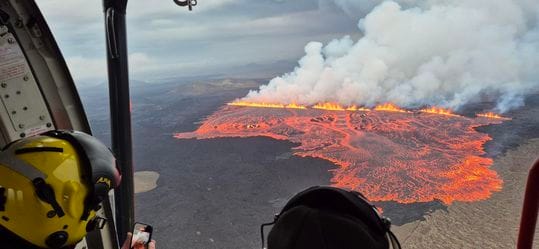
The new eruption on the Reykjanes Peninsula in Iceland seen on July 16, 2025. Credit: Iceland Coast Guard
After months of quiet, a new eruption started near Grindavík in Iceland on July 16. The eruption followed the pattern of the previous ones, with fissures opening along an SW-NE alignment followed by lava flows (above). However, these new fissures were further north, away from the town or the geothermal plant/Blue Lagoon.
The Icelandic Meteorological office has reported this eruption has caused some significant air quality issues in Iceland due to the copious sulfur dioxide emissions (see below). The current weather patterns means that the sulfur dioxide is being spread widely across the North Atlantic, at times from Greenland to Scotland. There were also some pictures of people finding Pele’s hair on their cars and homes in the region.
Dispersion of #volcanic SO₂ from the latest #eruption on #Iceland's #Reykjanes peninsula (July 16), measured by the Sentinel-5P TROPOMI satellite instrument. SO₂ emissions have spread into north and west Iceland, impacting air quality (Icelandic Met Office). @esa.int
— Prof. Simon Carn (@simoncarn.bsky.social)2025-07-18T19:15:37.500Z
The initial eruption opened a ~1 kilometer set of fissures with most lava flows traveling to the southeast of these new vents. Within half a day, the main fissure had reached over 2.4 kilometers while a second, parallel one reached half a kilometer. What started at ~10 active vents coalesced to a single active vent in the middle of the new fissures by July 22. You can see in the map (below) how much territory was covered by these new flows.
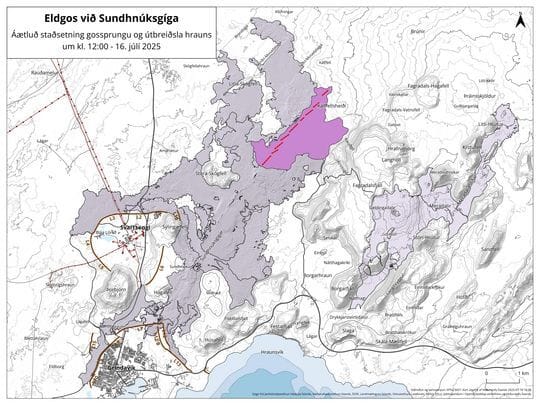
Map of the lava flows near Grindavik in Iceland. The purple area is the most recent activity. Credit: IMO.
Icelandic officials are trying to dissuade the numerous summer tourists from coming to the area to see the eruption, mostly due to the sulfur gas hazard.
Rainier, Washington
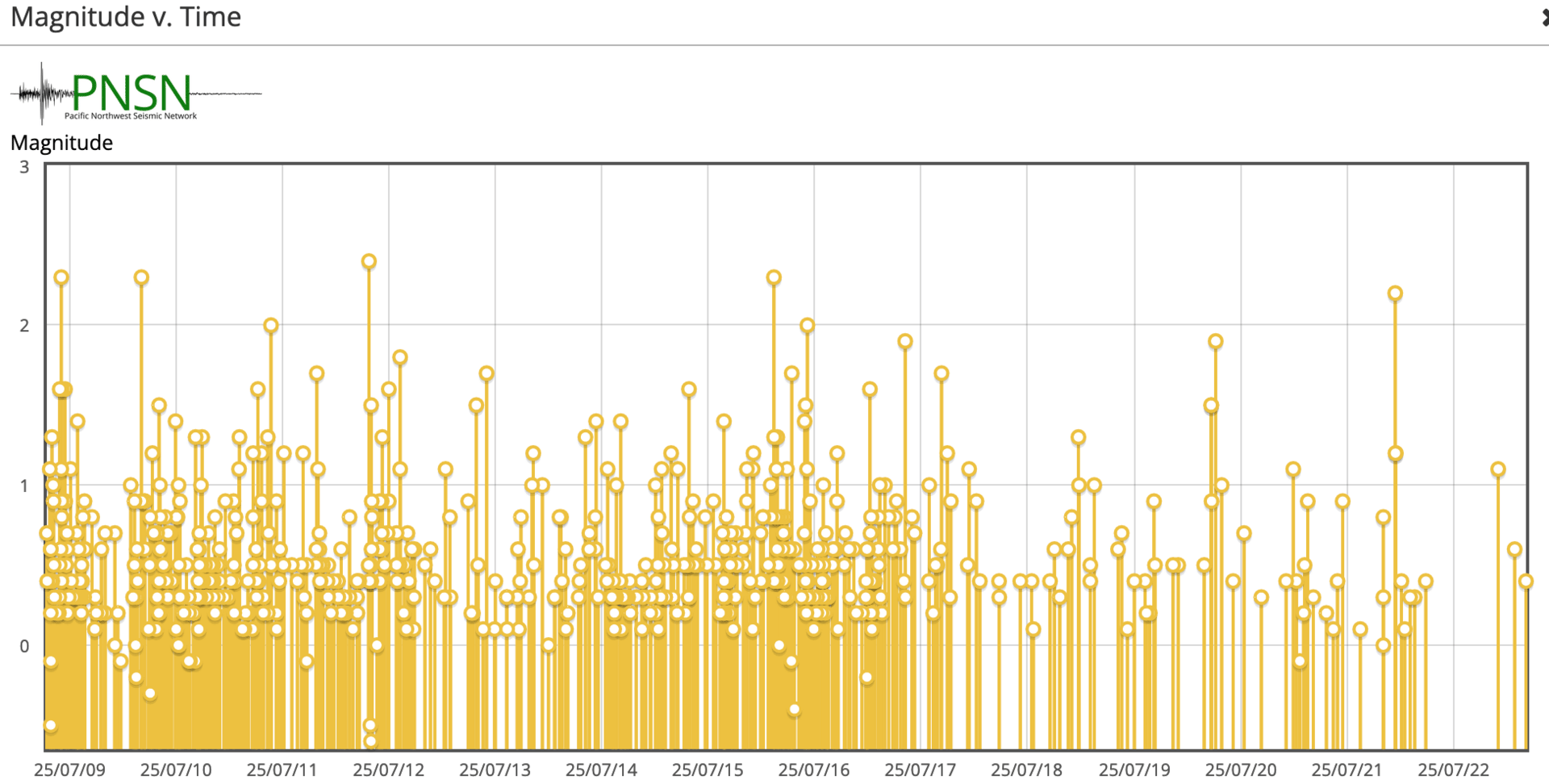
Earthquakes during much of July 2025 at Mount Rainier, Washington. Credit: PNSN.
The earthquake swarm that started last week at Rainier has slowly petering out. Even so, this bout of small earthquakes is now the largest on record at Rainier (remember, by “on record” we mean likely over the last 75 years). After starting in early July, earthquakes have dropped to a few a day from dozens. The interpretation of this swarm by the USGS Cascade Volcano Observatory remains fluids (but not magma) moving along pre-existing faults under the volcano.
Many Cascade volcanoes have vigorous hydrothermal system beneath them and sometimes hot fluids that are dominantly water will trigger earthquakes. This is thanks to the pressure on the surrounding rock as the fluids rise, potentially shattering the rock.
Planchón-Peteroa, Chile
If you want to talk seismic swarms, the current one at Chile’s Planchón-Peteroa puts Rainier to shame. The Chilean Geological Survey (SERNAGEOMIN) reported that from July 13-16, the volcano felt thousands of small earthquakes along with tremor. These are both signs that an eruption could be in the cards. Authorities raised the alert status Yellow and people were warned to stay at least 2 kilometers from the craters on the volcanic complex. The most recent eruptions at Planchón-Peteroa happened back in 2019.
Apaneca Range, El Salvador
Speaking of hydrothermal activity, an explosion occurred last week at an active hydrothermal area in El Salvador. The Apaneca Range is home to multiple volcanoes as well as Agua Shuca, a lake and fumaroles that are part of the larger Ahuachapán Geothermal Field (like are found at places like Yellowstone or the Lassen Volcanic Center). Occasionally, steam-driven (phreatic) explosions can occur in these zones of superheated water.
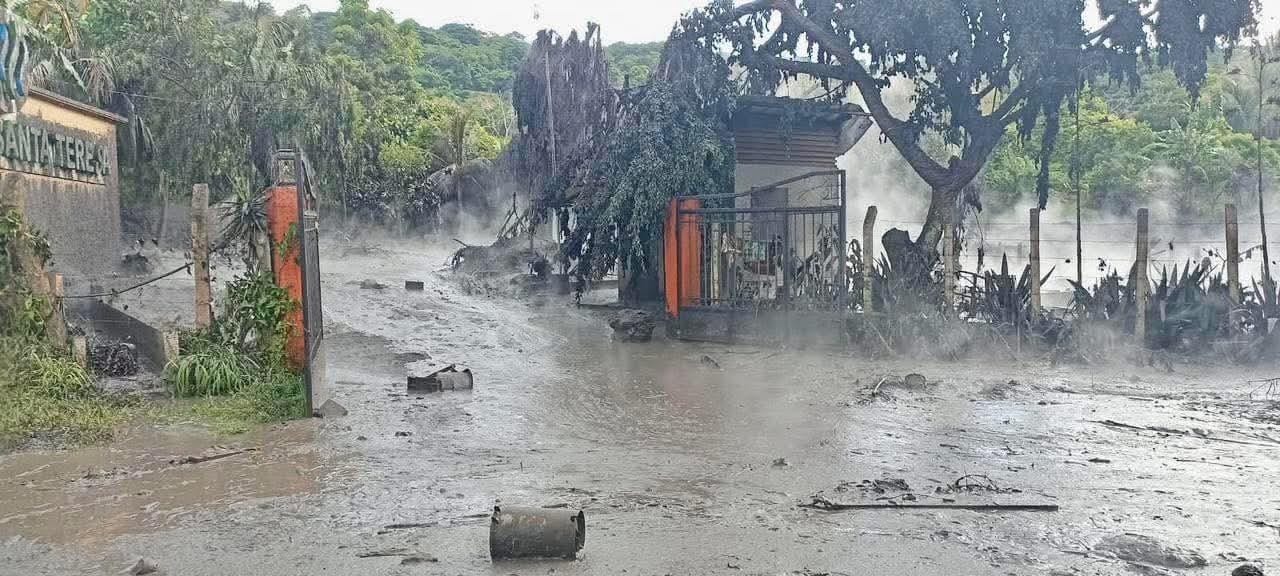
Damage caused by the phreatic explosion in the Ahuachapán Geothermal Field in El Salvador.
The explosion at the Ahuachapán Geothermal Field last week threw hot water along with muddy sediment across area, producing a 70 meter diameter crater that was 20 meters deep. Luckily, there were no fatalities and only minor injuries due to this explosion. A previous blast in 1990 that killed 26 people. Hydrothermal fields like this are notorious for unexpected and unpredictable explosions.
The Ahuachapán Geothermal Field itself has been producing electrical power since the mid 1970s. The plant has multiple 30-35 MW generators driven by steam produced by cycling water into the subsurface. That steam then spins turbines to create the electrical power. (Amusingly, I ran into an article about Miss Universe contestants visiting the power plant in 2023. I wonder what they thought?)
Kīlauea, Hawai’i
The 29th eruptive episode at the summit of Kīlauea hit this week — starting and ending on July 20 — but was not the massive lava fountaining event of many of the past episodes this year. Instead, low fountaining that reached as high as 100 meters (330 feet) occurred, sending lava in all directions from the vent. The USGS Hawai’i Volcano Observatory thinks that part of the vent “broke”, preventing the high pressures at the vent to make tall fountains. Think of this like when you put your thumb across a hose — move your thumb and suddenly it doesn’t spray as much.
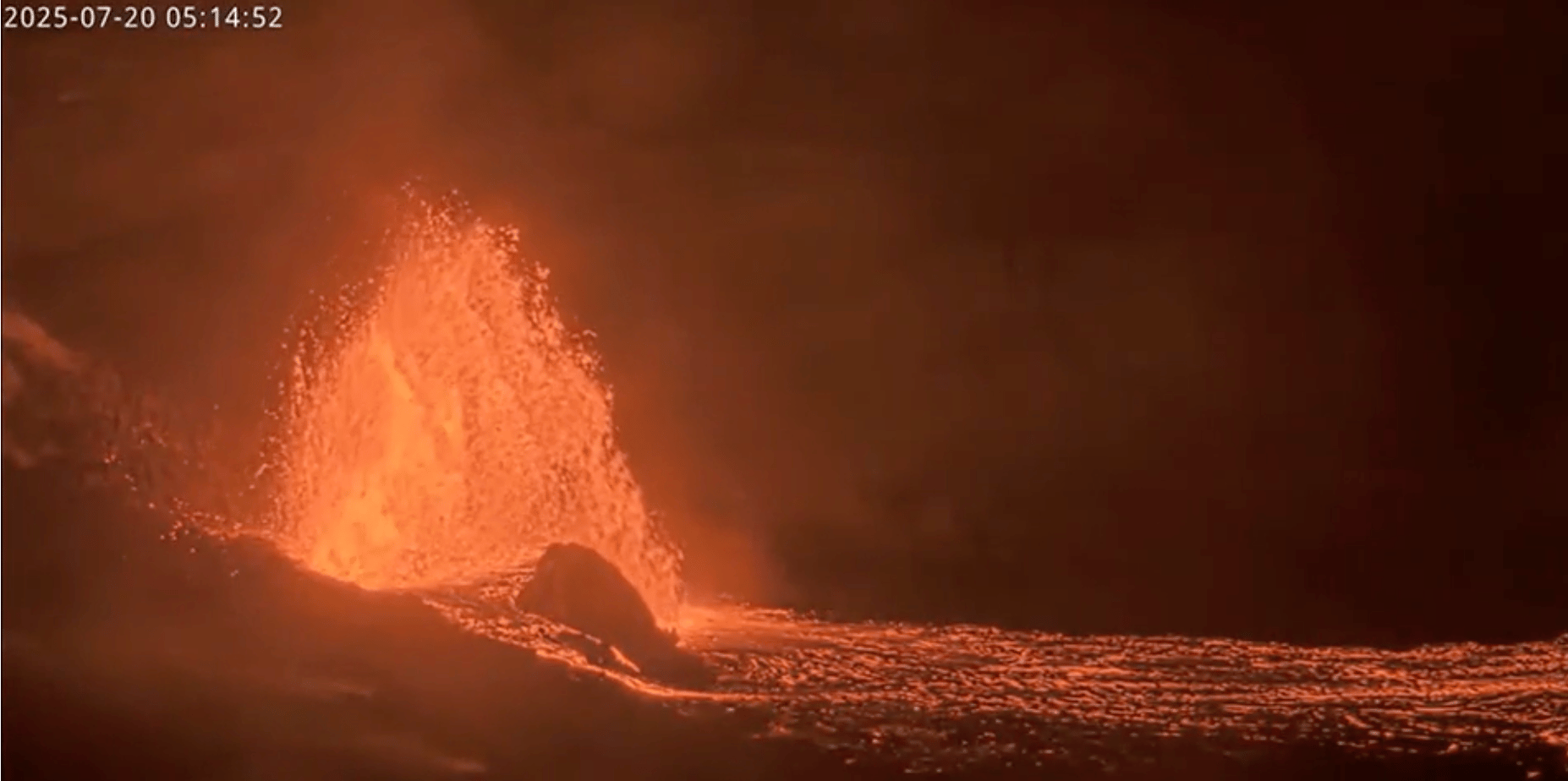
The smaller (but still vigorous) lava fountains during the 29th eruptive episode at Kīlauea this week. Credit: HVO livestream capture.
On top of that, the 29th episode lasted a little longer than some of the recent episodes with 13 hours of eruption. So, even though it wasn’t has spectacular, it was likely just as voluminous as the previous events. The lava flows from July 20 covered 80% of the crater floor.
Papandayan, Indonesia
One of the most intriguing updates in this week’s Smithsonian/USGS Volcanic Activity Report was that of “blue flames” at Indonesia’s Papandayan. These flames are caused by oxidized sulfur and heat at the volcano, so this occurrence, the first since 2023, suggests to Indonesian scientists that things might be getting warmer under the volcano. The most recent eruption at Papandayan was in 2002. Even with this recent activity, Papandayan is seen as a potential geothermal energy location for Indonesia.
Volcano Word of the Week
While I was reading up on the recent unrest at Papandayan, I was reminded of a word that pops up in volcanoes with vigorous hydrothermal systems: solfatara. That’s this week’s Volcano Word.
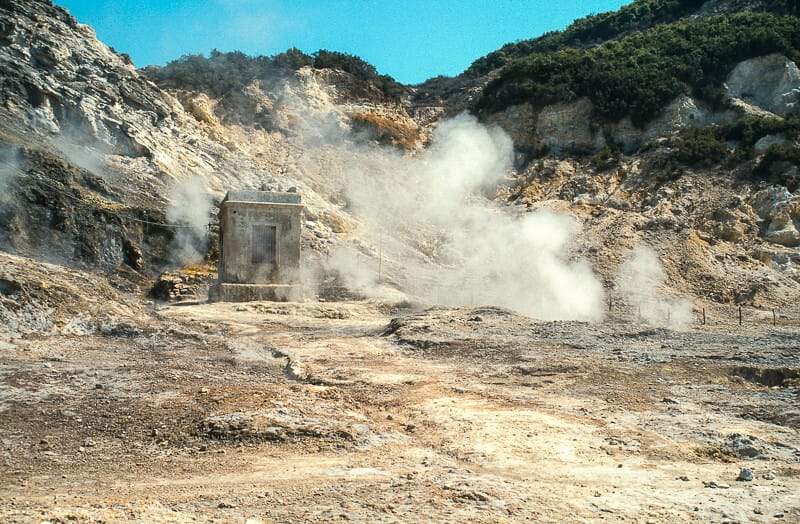
Solfatara, a crater within the Campi Flegrei volcanic area in Italy. Credit: Flickr.
Solfatara is a word that comes from a specific location but now is used in a more generic form at lots of volcanoes. The original Solfatara (capital S) is in the Campi Flegrei along the Bay of Naples in Italy. The region of fumaroles (hot gas vents) with abundant sulfur emissions and deposits is located in one of the many craters that litter the Campi Flegrei caldera areas.
The original Solfatara was formed during the activity in the caldera between 4,800 to 3,800 years ago and last had an eruption (likely steam-driven) in ~1138 CE. The locale shows up in the Aeneid. Romans believed that the sulfur-rich gases and mud were therapeutic (they aren’t) and built up around the vents. In fact, Solfatara itself was seen as the entrance to the underworld and/or the home of Vulcan during Roman times. The area has also been a mine for a variety of minerals that form from the hot gas and water emissions — things like sulfur and alum.
Today, the term “solfatara” refers to more than just this area of the Campi Flegrei. Any area near a volcano that has high gas emissions with abundant sulfur can be called a solfatara. In the US, the most famous solfataras might be Solfatara Creek/Plateau at Yellowstone or Bumpass Hell, the hydrothermal area near California’s Lassen Peak.
Solfataras are still mined today. Kawah Ijen in Indonesia is likely the best known of these active solfatara mines, where eerie blue flames form from ignited oxidized sulfur. It is dangerous work as the miners are extracted sulfur from an area of active degassing. It can be easy to be overwhelmed by the gas emissions or heat doing such work.
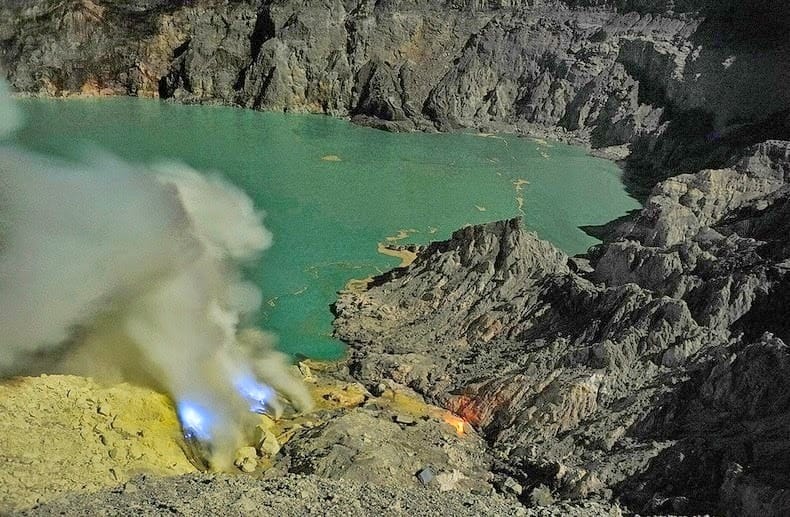
Blue flames from sulfur vents at Kawah Ijen in Indonesia. Credit: Flickr.
Visiting solfataras can be an otherworldly event, but they are dangerous. A few years ago, 3 people died at the Solfatara in Italy after falling into one of the vents. They were staying on the marked trails, but even that can be dangerous. Solfataras can have unexpected explosions as well, so even if they seem benign, the hazard is there.
Odds & Ends
No Yellowstone Eruption Coming
Guess what? Yellowstone isn’t going to erupt. Much like death and taxes, we can be assured that “Yellowstone is about to erupt” rumors will pop up on the internet regularly. This summer’s rumors that “animals are fleeing” the park because an eruption is nonsense. This year we even got AI into the act to make fake videos of animals leaving the area. Folks, I realize it is hard to vet every source/video/audio on the internet, but we’re living in a time where you should assume a lot of it is false until it is proven true by reputable sources.
Things are normal
Whenever a few volcanoes make headlines, we get a flurry of the “what’s up with all the volcanoes?” articles. Sure enough, we had one that tried to wrap the normal unrest across the U.S. into something more. Remember, at any given time, there are dozens of active volcanoes on Earth — and that doesn’t even include those that are just restless rather than throwing stuff out.
Speaking of fearmongering, a Yahoo! article had the audacious title of “Horrifying Research Finds Melting Glaciers Could Activate Deadly Volcanoes”. Ho boy, a lot to unwrap there. Yes, there is evidence that melting glaciers can cause an increase in volcanic activity. However (and its a big one), how quickly after glaciers melt and how much of an increase occur is still hotly debated. More or less: don’t expect volcanoes to start erupting left and right as we lose mountain glaciers due to climate change.
Finally, I ran across an article ranking the “most dangerous volcanoes.” How come nobody does “most dangerous faults” or “most dangerous marsupials?” I tend to think that the most dangerous volcano is one that isn’t well monitored and we don’t know much about it. However, I’ve seen worse lists (yay, no Yellowstone).
Dante’s Peak Suburban Found
We all love to debate what the best volcano movie might be. The largest camp tends to say Dante’s Peak was the best (they’re wrong, by the way, the best is clearly Volcano). Even if it isn’t your favorite, the scene where Pierce Brosnan, Linda Hamilton, the kids (and dog) are driving over lava is one of the most memorable (and kind of dumb) scenes in the film.
Recently, the red Chevy Suburban from the film was a “barn find”(below) in Massachusetts. It was in rough shape, but a dedicated movie car fan (Greg Ward) is fixing the Suburban back up. Now, I am adamantly not a “big truck” guy, but the shot of the Suburban, even in its current barn form, does remind me how badass that truck was in Dante’s Peak. You can check out the whole rundown on its current condition in this YouTube video from Ward. I just hope he enjoys the 8 mpg.
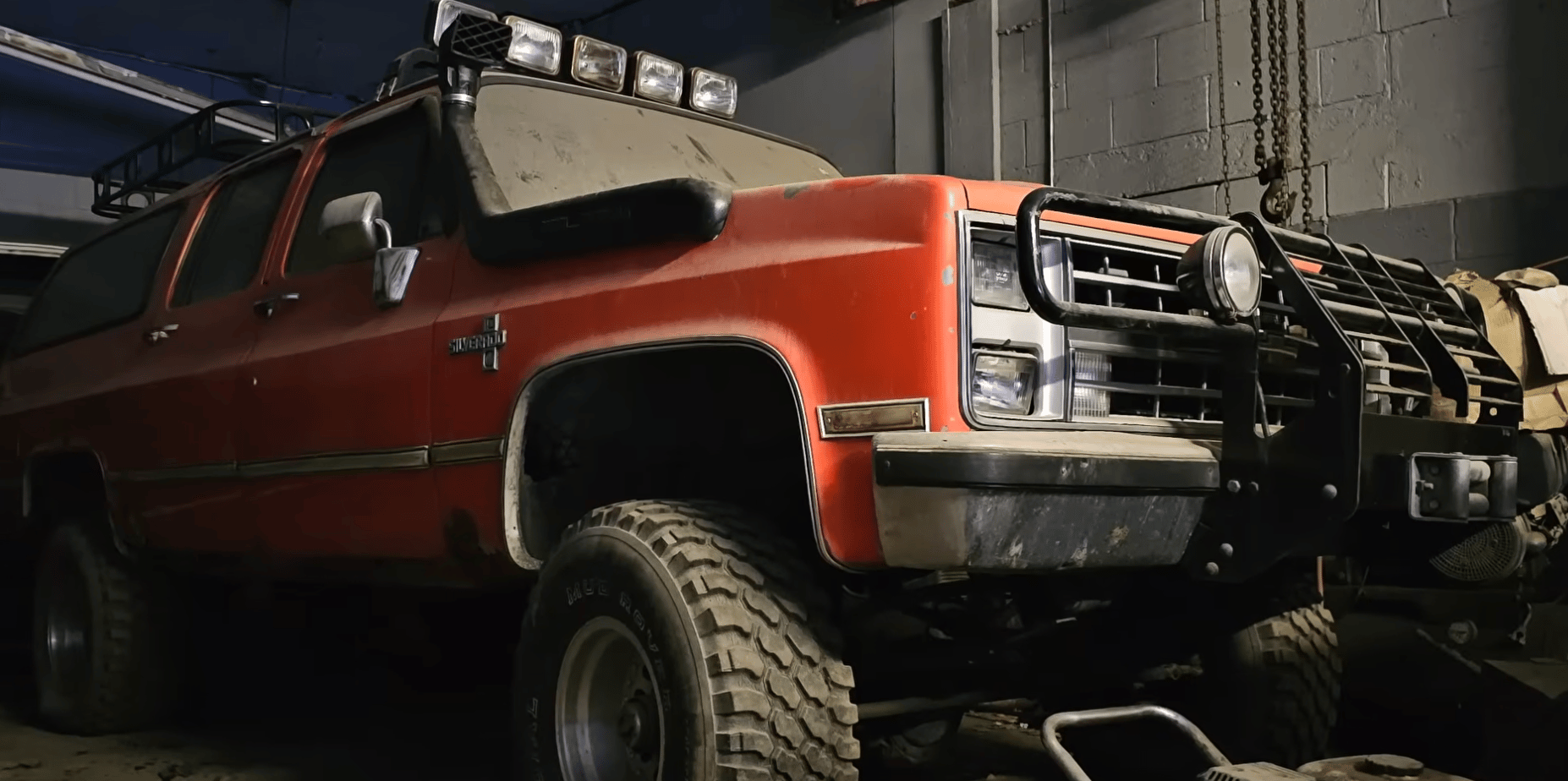
The Dante’s Peak Suburban. Credit: Greg Ward/YouTube
Sounds of the Week
In honor on the renewed eruptions in Iceland, how about some Sigur Rós? Sounds good to me!
Questions? Comments? Thoughts? Feel free to leave a comment, send me a note or follow me on Bluesky (@erikklemetti.bsky.social).
Be sure to check out my podcast, 5 Minute Volcano and the Patreon page for the Eruptions Newsletter/5 Minute Volcano Podcast.
Reply